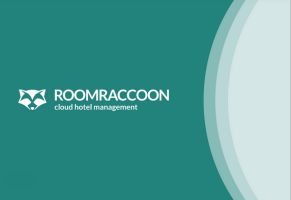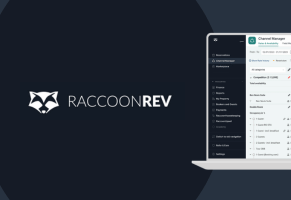CORE PRODUCT
Mastering the Art of Hotel Distribution Strategy — A Step-By-Step Guide
June 30, 2023 Sini. M
Home > Distribution, Hotels > Mastering the Art of Hotel Distribution Strategy — A Step-By-Step Guide
Share this post

As a hotelier, you have several options when it comes to distribution. You can receive direct bookings through your website and advertise on online travel agencies (OTA) and other booking sites such as metasearch engines and global distribution systems. However, to maximize your hotel’s revenue, it’s vital to use a mixture of channels that meet the needs of your target market. RoomRaccoon’s robust property management system has all the distribution channels suited for your business needs at your disposal.
In this article, we’ll look at the most profitable hotel distribution channels you can implement, whether you operate a hotel, a vacation rental or B&B; but first, let’s define hotel distribution strategy.
What Is a Hotel Distribution Strategy?
A hotel distribution strategy is a systematic approach to deciding when and which channels you will use to sell rooms profitably. A hotel distribution channel can be anywhere — online and offline, as long as it can sell rooms to potential guests. Examples of effective hotel distribution channels include a hotel’s website, OTA’s, metasearch sites, global distribution systems (GDS) and direct phone bookings.
What Is the Difference Between a Distribution Strategy and a Marketing Strategy?
A marketing strategy focuses on generating demand, while a distribution strategy is a revenue management function that generates bookings. Success in distribution management is measured by the revenue and profitability generated by the hotel distribution channel, considering booking volume and average rates.
In hospitality, a marketing strategy is your long-term plan for achieving your hotel’s goals by understanding your guests’ needs and creating a distinct and sustainable competitive advantage. Your marketing strategy should focus on connecting your hotel with prospective guests. In contrast, your distribution strategy involves efficiently distributing your property’s products or services. This type of strategy aims to maximize revenue while maintaining loyal customers.
How to Build a Profitable Hotel Distribution Strategy: 4 Key Points
RoomRaccoon’s hotel performance report shows the purpose of the stay.
- The first step to building a hotel distribution strategy is clearly defining your target market and having an ideal customer profile. Knowing your target market will decide which distribution channel you employ because your perfect customer or ideal guest will book on channels they feel more comfortable using.
RoomRaccoon’s performance report clearly shows you which channels your guests use to book, their geographical demographics, the average length of stay and the purpose of their visit. We delve more into hotel reports here. - Most hotel distribution strategies aim to increase visibility with your ideal guests, increasing bookings. Ensure your distribution strategy aligns with your sales objectives and target metrics, which will determine your business objectives. Start by understanding where you are and want to get to. Are you trying to reach international guests or want to improve your seasonal bookings? Every strategy should have clearly-defined goals.
- Another step is to test and optimize your distribution strategy; it should be dynamic and not static. You should continuously test new channels, mix online and offline channels, optimize existing ones, and ensure that your core channels deliver profitable results. Testing and optimization also refer to your rates and pricing strategies. RoomRaccoon’s revenue management tool, RaccoonRev, allows you to set exclusive yield rules that automatically optimize your rates and outperform your competitors with dynamic pricing.
- After determining which metrics are essential to your hotel based on your goals and objectives, you must compare critical metrics across channels. Some channels offer more visibility than others but may have higher costs or slimmer margins. The right strategy will find a mix of visibility, profitability, and optimized brand messaging.
In the next section, we’ll explore the types of distribution channels for hotels.
Five Types of Hotel Distribution Channels
1. Booking Engine
Your booking engine is the primary source for direct bookings. Direct bookings are more profitable, more likely to result in repeat visits, and better optimized for upselling. As a result, most hotels consider their website the most profitable distribution channel in their strategy.
Your hotel’s website offers many opportunities to highlight your unique amenities, show off your property with high-quality imagery, and boost engagement with videos, interactive content, testimonials and reviews.
To increase hotel direct bookings, ensure your website’s mobile version is optimized for simple and speedy bookings. Guests are now searching and booking hotels on mobile devices without opening a desktop browser, so you want to take advantage of that business.
2. Online Travel Agencies
Online travel agencies are an ever-present and integral part of the hotel booking process. Expedia, Booking.com, and Travelstart have huge audiences and are a great way to reach guests you might have yet to reach. While OTA’s are important in hotel distribution, remember you don’t have complete control over the messaging about your hotel on an OTA.
Still, you can optimize your listing with photos, highlight special amenities, and offer attractive pricing for packages and OTA audiences. Focus on OTAs your target audience uses and understands to keep your costs down. Your booking insights and report will tell you which OTA your target market prefers.
3. Metasearch Engines
You can weaponise metasearch engines as a hotel distribution channel. Sites like Tripadvisor, Trivago, and Google Hotels charge hotels and OTAs on either a pay-per-click or pay per stay. The user experience on metasearch sites is excellent, with a simple booking process and easily-searchable information about your hotel.
Maximize your bookings from metasearch in these three practical steps:
- Ensure your pricing in search engines matches the price listed on your website.
- Test your cost-per-click (CPC) to balance your costs and your competitiveness with OTAs.
- Optimize your strategy for the metasearch site that you’re targeting. Some sites will attract visitors with less booking intent and should therefore have lower CPCs to be an efficient distribution channel.
4. Phone Bookings
We implore you not to ditch the phonebook, no matter how much you’ve embraced digitalisation and automation in your distribution strategy. Some target demographics, such as older adults and travel agents, may still find the phone book useful. Your front desk and reservation line are channels that offer opportunities for human connection and quick customer service. Direct phone bookings are a low-cost and reliable distribution channel.
5. Global Distribution Systems
Global distribution systems (GDS) are an essential distribution channel for connecting with OTA’s because travel agents use this system to browse hotels, view rates, and check availability.
This hotel distribution channel strategy helps keep your information up-to-date with travel agent systems all around the world, as well as providing real-time pricing and availability information. To take full advantage of this distribution channel, utilise dynamic pricing where your rates will remain competitive against similar properties but high enough that you can overcome the GDS fees.
Hotel Distribution in a Nutshell
Distribution doesn’t have to be a complex endeavour; when done right, it will boost reservations, increase revenue and drastically improve your profit margin. An effective and powerful hotel distribution strategy will drive demand and sales as it attracts the right guests because, without distribution, you might as well close your doors.
When building a hotel distribution strategy, use a holistic approach, such as RoomRaccoon’s all-in-one software solution, and not just one distribution channel. Know your target market, define your goals, continuously test your strategy and compare metrics. With these tools, you’ll unlock the success and longevity of your property.
Follow us
Sini. M
Sini is an accomplished Content Manager at RoomRaccoon. As an agency-hailed talent, her work brings a fresh creative flair to the world of SaaS. And she brings her very own brand of sass to the SaaS world. While not on the clock, Sini enjoys a glass of fine wine, and well, her privacy.
Related Posts
Subscribe to our newsletter for more on the latest hospitality & RoomRaccoon updates delivered straight to your inbox!











